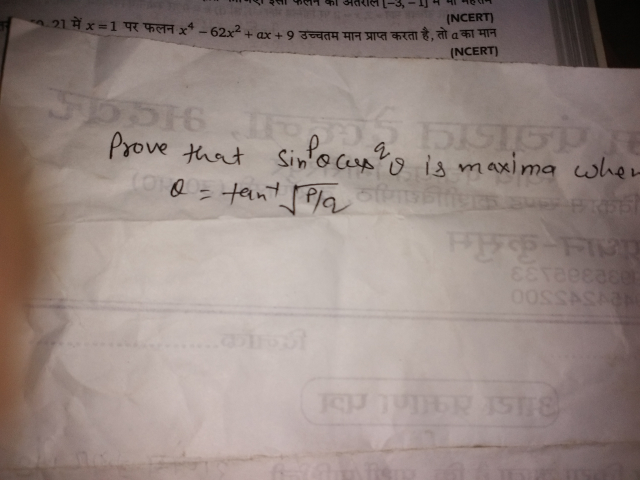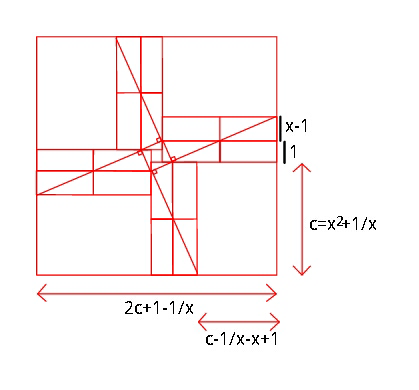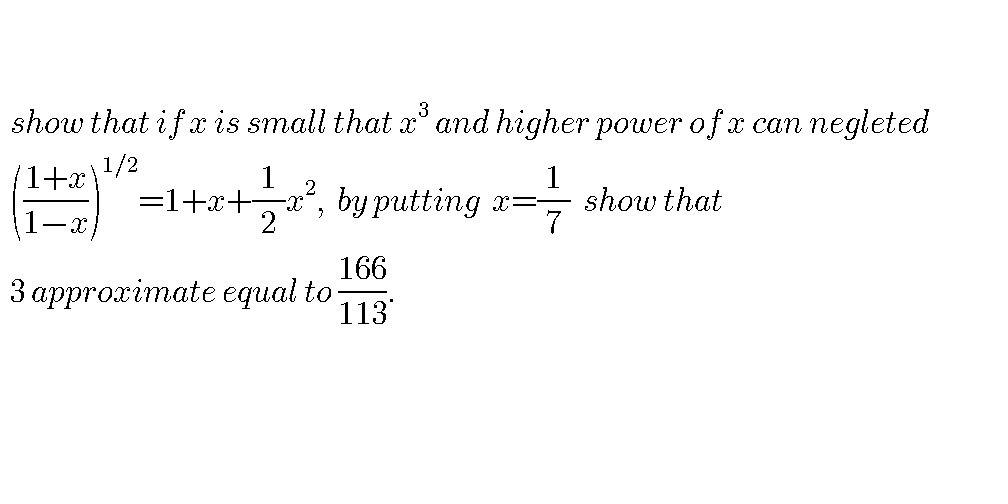
AllQuestion and Answers: Page 1679
Question Number 40297 Answers: 0 Comments: 0

Question Number 40285 Answers: 3 Comments: 0
Question Number 40284 Answers: 1 Comments: 0
Question Number 40283 Answers: 0 Comments: 0
Question Number 40277 Answers: 2 Comments: 0

Question Number 40276 Answers: 2 Comments: 0

Question Number 40271 Answers: 1 Comments: 0
Question Number 40270 Answers: 1 Comments: 0
Question Number 40260 Answers: 0 Comments: 2
Question Number 40251 Answers: 1 Comments: 0
Question Number 40255 Answers: 1 Comments: 2

Question Number 40254 Answers: 0 Comments: 3
Question Number 40238 Answers: 2 Comments: 0

Question Number 40237 Answers: 1 Comments: 4
Question Number 40236 Answers: 1 Comments: 0
Question Number 40231 Answers: 1 Comments: 0

Question Number 40222 Answers: 1 Comments: 0
Question Number 40218 Answers: 2 Comments: 0
Question Number 40216 Answers: 1 Comments: 0

Question Number 40213 Answers: 0 Comments: 0

Question Number 40212 Answers: 2 Comments: 1
$${Solve}\:\mathrm{4}{x}^{\mathrm{2}} −\mathrm{8}{x}−\mathrm{3}=\mathrm{0} \\ $$
Question Number 40188 Answers: 0 Comments: 0
$${can}\:{any}\:{one}\:{plss}\:{answer} \\ $$$${question}\:;\:\mathrm{40057} \\ $$
Question Number 40186 Answers: 0 Comments: 0

Question Number 40185 Answers: 0 Comments: 0

Question Number 40176 Answers: 0 Comments: 0

Question Number 40173 Answers: 1 Comments: 1

Pg 1674 Pg 1675 Pg 1676 Pg 1677 Pg 1678 Pg 1679 Pg 1680 Pg 1681 Pg 1682 Pg 1683
